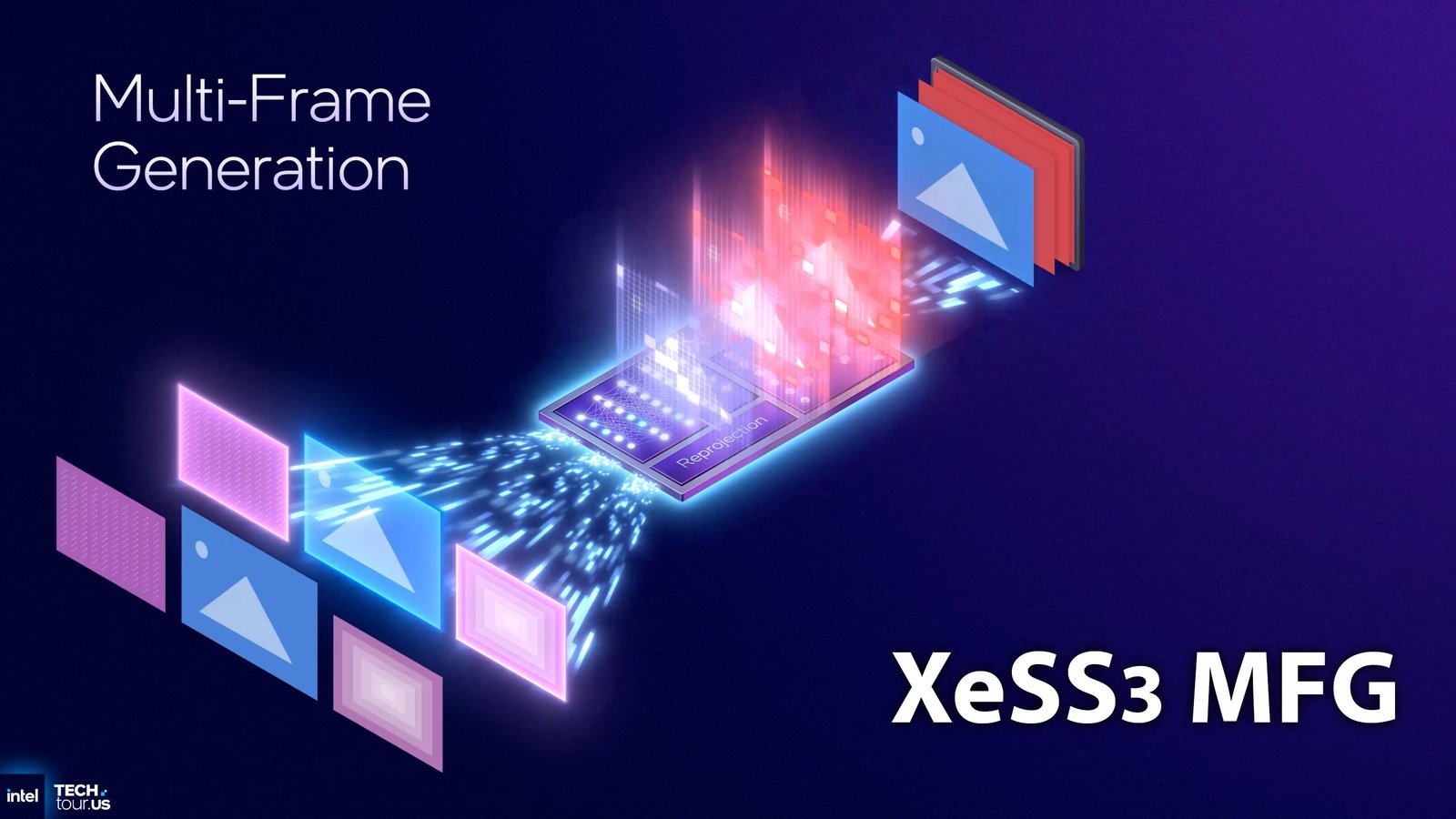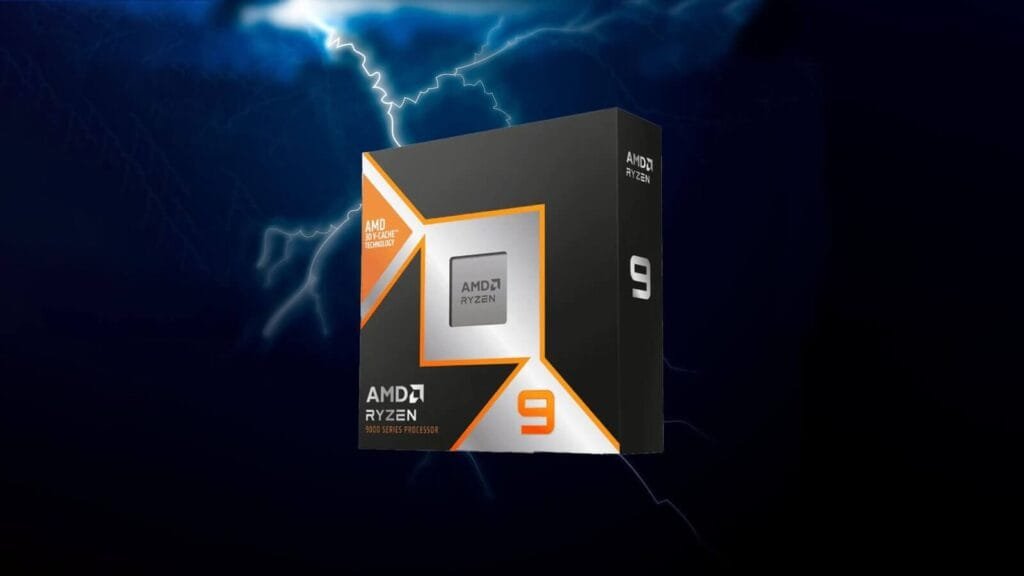Intel has unveiled XeSS 3, the latest iteration of its AI-driven upscaling technology, during the Intel Tech Tour 2025 event, marking a significant evolution in its graphics enhancement suite. This update introduces XeSS-MFG, or Multi-Frame Generation, as a core component that pushes beyond conventional single-frame interpolation by leveraging an optical flow network built on motion vectors and depth buffers to create up to three additional frames. This capability allows for generating up to four frames from just two source frames, effectively delivering up to 4× frame output and enabling smoother animations with higher perceived frame rates, akin to advanced features in competing technologies like NVIDIA’s DLSS stack, which separates upscaling from frame generation.
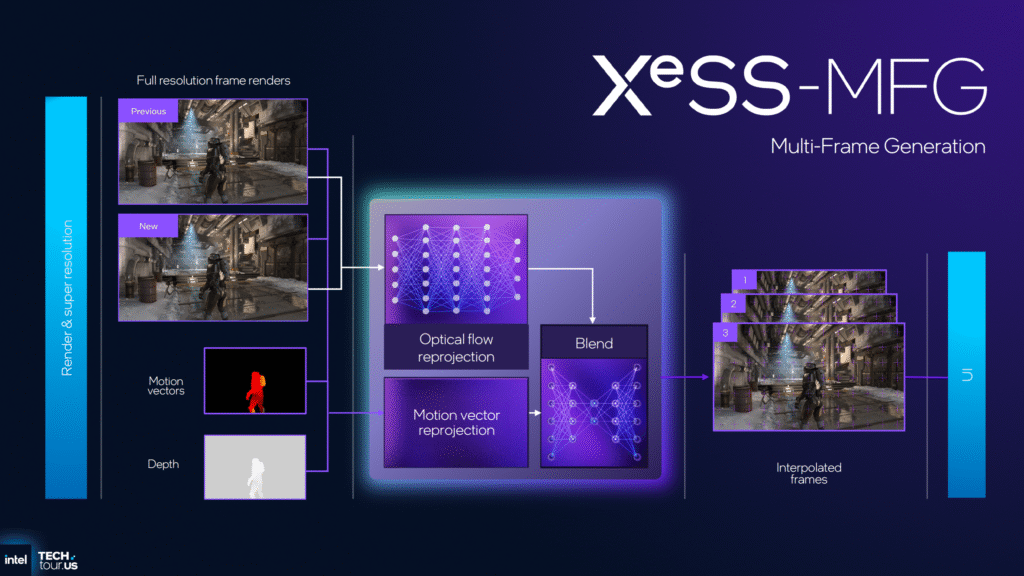
Key enhancements in XeSS 3 include expanded user controls within Intel’s Graphics Software application, such as Frame Generation Override, empowering users to manually choose 2×, 3×, or 4× generation modes or defer to application defaults for optimal performance. Additionally, the update incorporates Shared GPU/NPU Memory Override, permitting the allocation of system memory for integrated GPU and Neural Processing Unit workloads, mirroring AMD’s shared memory optimizations to boost efficiency in resource-constrained environments. Intel is also integrating support for shader precompilation through Microsoft’s Advanced Shader Delivery system, which streams precompiled shaders from the cloud to minimize first-launch stuttering and accelerate loading times across games and applications. Complementing these is an update to PresentMon, Intel’s performance monitoring tool, now equipped to track both native and generated frame metrics specifically for MFG operations. Furthermore, the rollout features Intelligent Bias Control v3, an advanced scheduling and power management algorithm tailored for upcoming Panther Lake system-on-chips, building on prior refinements seen in Lunar Lake processors to enhance overall GPU responsiveness and energy efficiency.
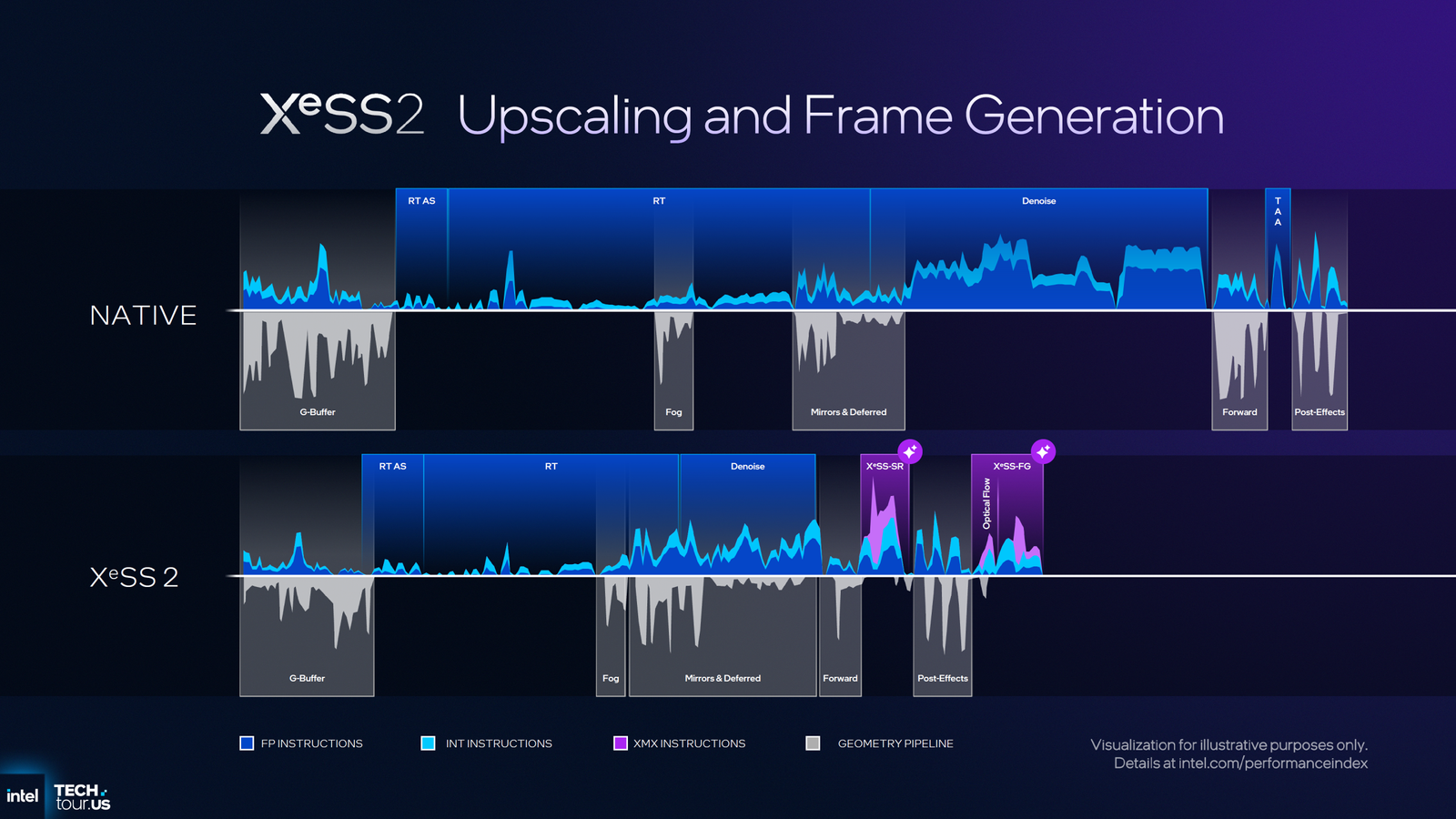
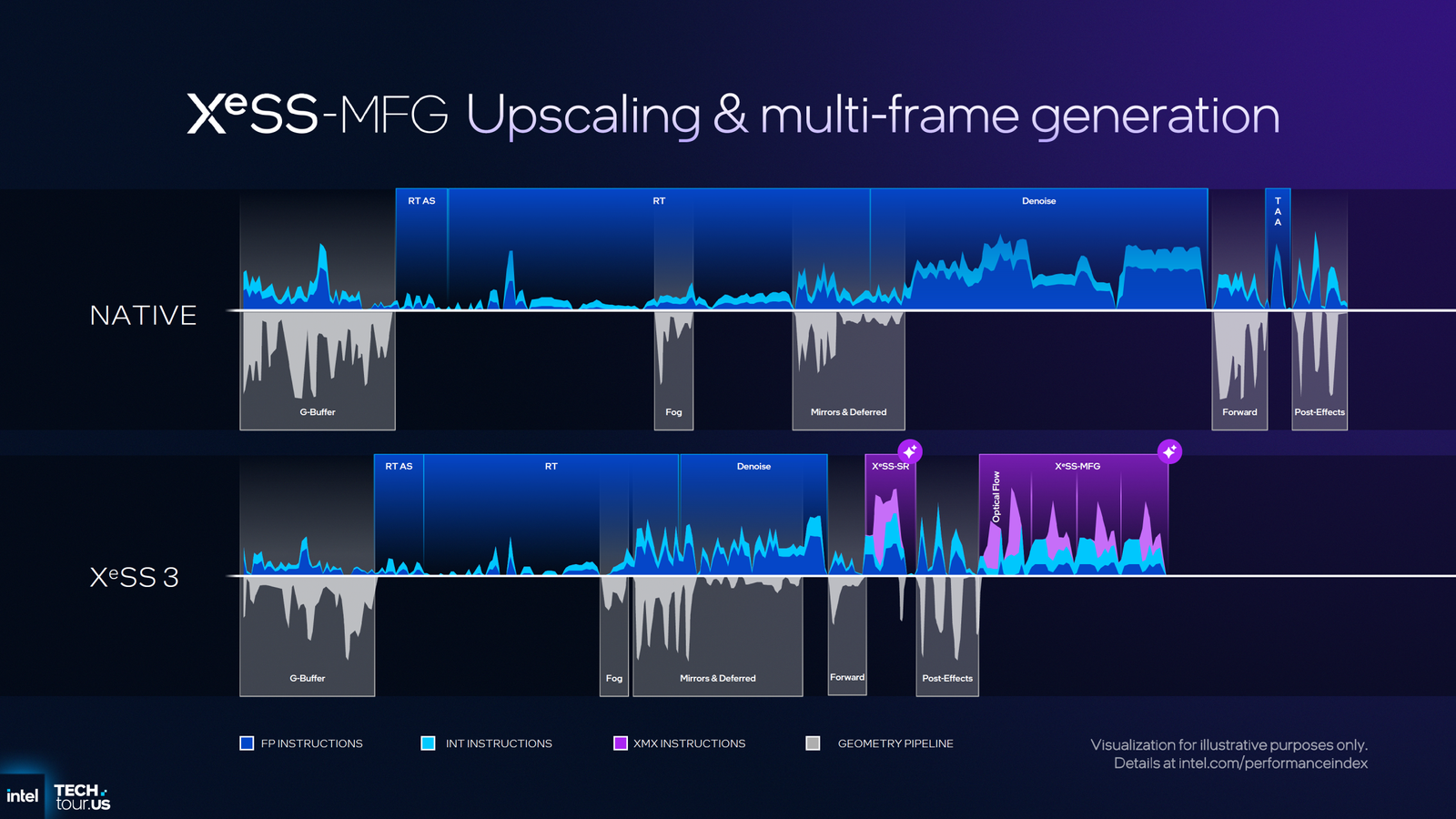
Souce: Intel
In terms of performance gains, XeSS-MFG is engineered to deliver fluid motion and elevated frame rates without compromising visual fidelity, while the shader precompilation and Intelligent Bias Control v3 promise reduced latency and more consistent delivery in demanding scenarios. Compatibility remains a strong suit, with XeSS 3 MFG fully supporting all Arc GPUs featuring XMX hardware acceleration, encompassing the Arc A-series discrete cards, Core Ultra 200 (Xe2 architecture) integrated solutions, and forthcoming Arc B-series (Xe3) products. Notably, Intel plans to extend this multi-frame generation capability to legacy Xe1-based GPUs in a subsequent update, positioning the company as the pioneer in retrofitting such advanced features across multiple hardware generations and becoming only the second vendor overall to offer multi-frame generation, trailing NVIDIA’s DLSS 4.
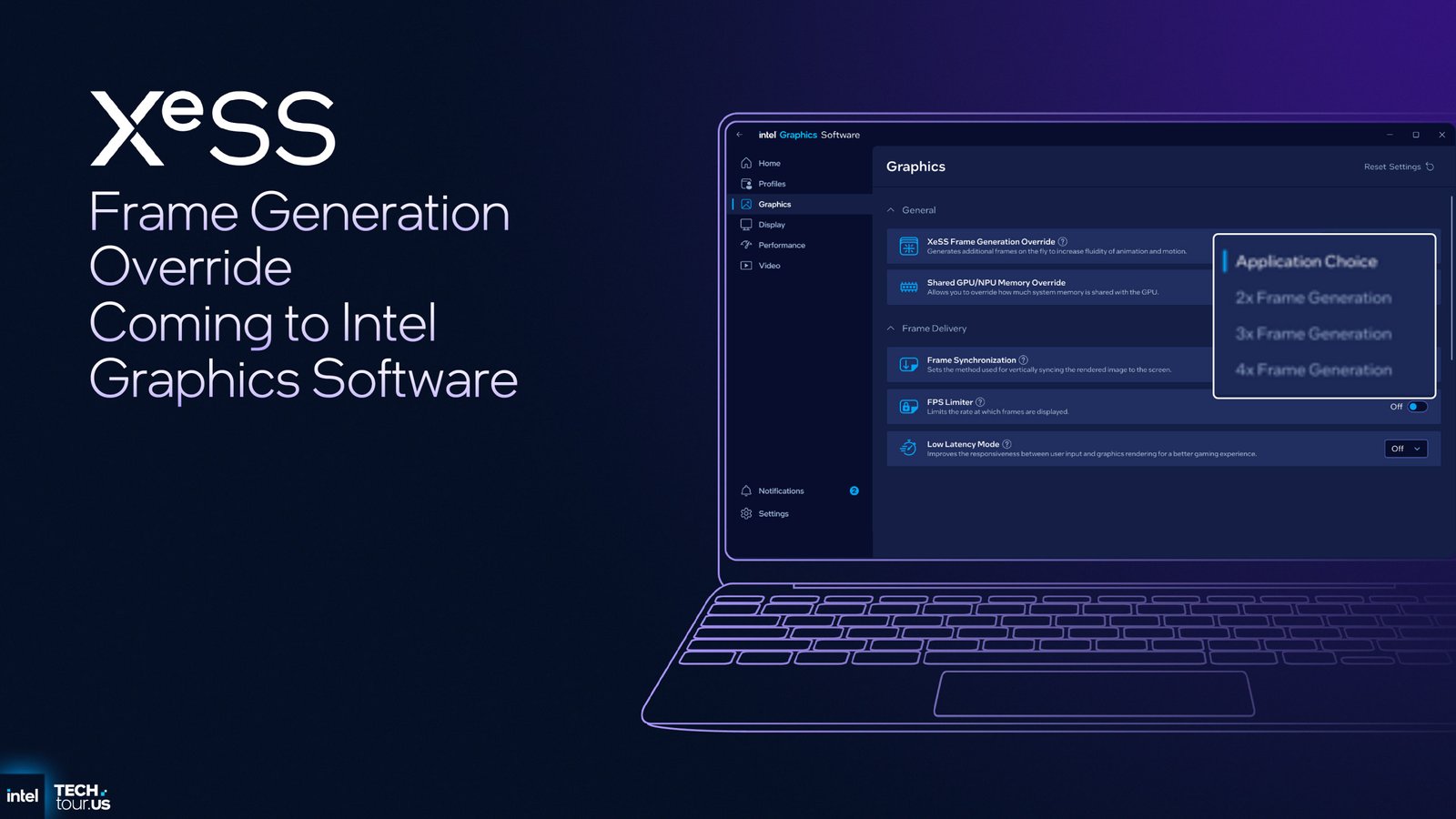
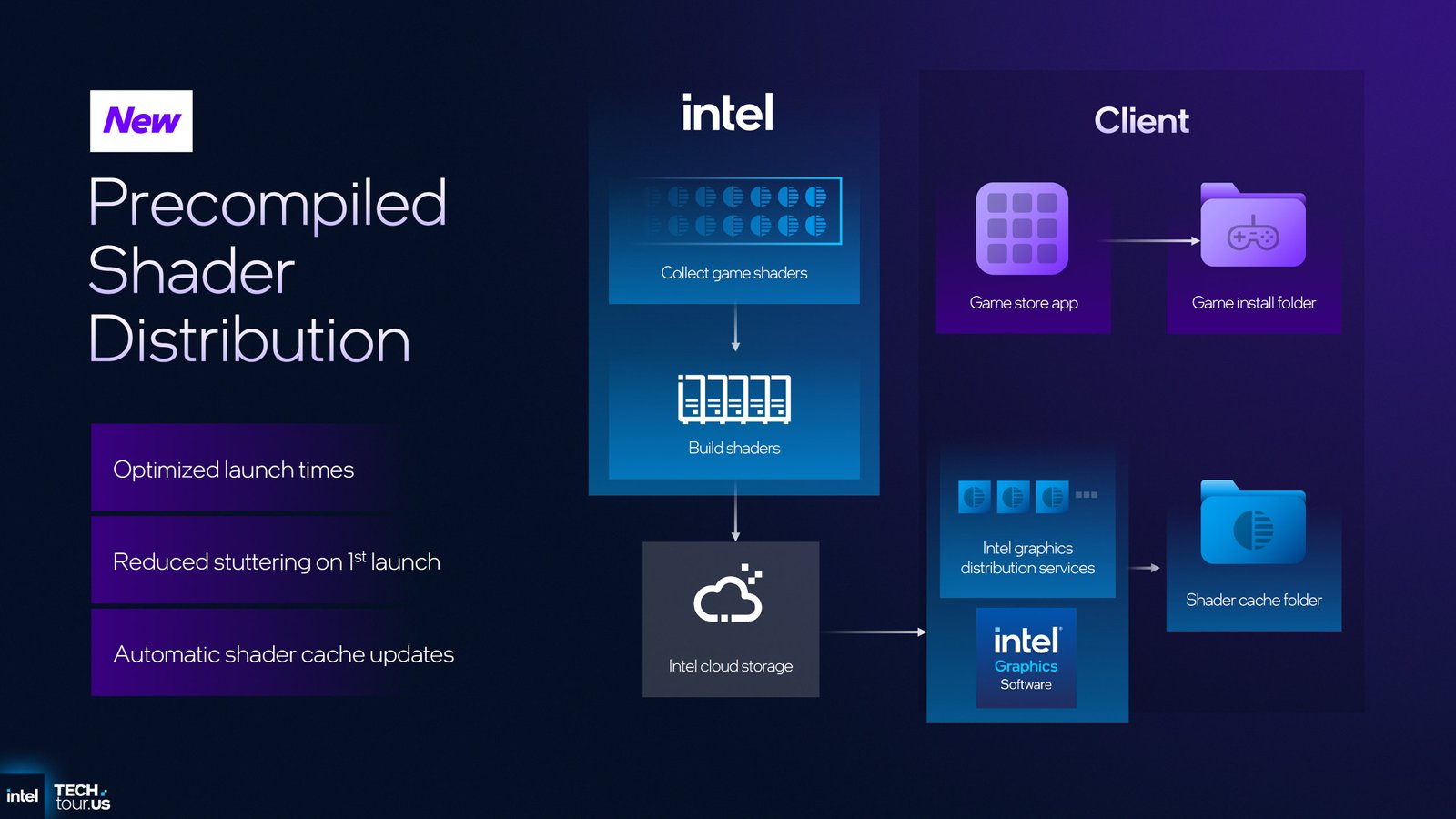
Source: Intel
Looking ahead, Intel has yet to specify an exact launch timeline for XeSS 3 or its accompanying control enhancements, though they are anticipated to synchronize with the debut of the Panther Lake platform and the Xe3 graphics architecture in 2026, potentially ushering in broader adoption across Intel’s ecosystem of discrete and integrated graphics solutions.
Source: Intel, videocardz, wccftech

